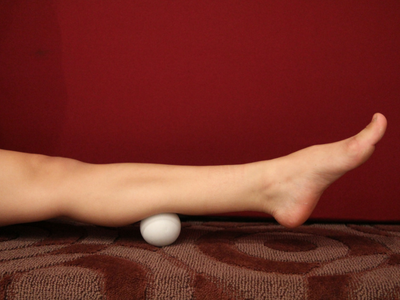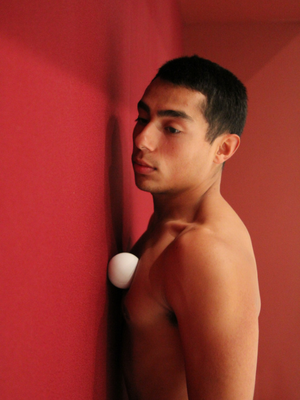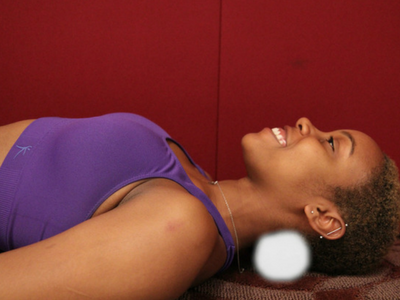From time to time, NDEO features guest blog posts, written by our members about their experiences in the field of dance education. We continue this series with an entry from Lisa D. Long of CSU Fullerton. Guest posts reflect the experiences, opinions, and viewpoints of the author and are printed here with their permission. NDEO does not endorse any business, product, or service mentioned in guest blog posts. If you are interested in learning more about the guest blogger program or submitting an article for consideration, please email Shannon Dooling-Cain at sdooling@ndeo.org.
Self-Care for Dancers Ushers Forth Enhanced Performance
By Lisa D. Long, California State University Fullerton
As physical and energetic creatures, dancers spend endless hours training their minds and musculature into optimally functioning, art-making instruments. But just as one must change a car’s oil, lubricate bicycle chains and snake clogs out of a drain, bodies, as instruments, need the same kind of maintenance. Remembering to take the time to pause, and unblock the knots and energy that are congealing within muscles and joints ensures that they operate at full capacity.
Dancer’s bodies go through endless hours of training and creation, often without the benefit of proper stretching or hydration, which can cause adhesions. When connective tissue called fascia, adheres to muscles, bones, and to itself, range of motion becomes limited and thereby so does energy flow. On a purely physical level, as flexibility declines, there is a hazard of soreness and injury. Seldom due to big impact, these injuries are commonly overuse injuries caused by repeating tasks without balancing strengthening with stretching. Daily dance class, rehearsal, hours of practice, or simply sitting in poor alignment, all build up muscular tightness that impedes the flow of blood, lymph, and energy. When muscles bind together, peak performance cannot be reached because it takes more energy to generate less movement. When muscles work independently, doing only their intended job, the whole being experiences optimum function and flexibility. This simultaneously enables energy to cascade, unimpeded throughout the body. What dancer does not want to experience that? This is precisely why self-care is not a luxury; it is routine maintenance.
With limited time and/or financial resources, dancers are likely to put off self-care such as therapeutic massage. Yet, there are widely available self-care tools to help artists perform daily upkeep. Basic myofascial release consists of applying heat and pressure to connective tissue in order to decrease adhesions and restore muscles’ independent action. Enter the gateway to newfound physical and energetic efficiency. “Because myofascial release is noninvasive and safe with virtually no side effects, it comes with a record of very good results. Performance of any sport or task has the potential to improve significantly with myofascial release.” (Wolters Kluwer)
To understand the magic that is myofascial release, try this experiment:
-
First thing in the morning, bend over.
-
Assess flexibility.
-
Sit down and roll each foot for 2 minutes on a lacrosse ball (this tool is harder than a tennis ball, less likely to break down, inexpensive, and ultimately portable).
-
Apply a fair but not painful amount of pressure.
-
Stand up.
-
Bend over.
-
Re-assess flexibility.

Chances are quite good that with only a few minutes of attention, flexibility and flow begin to increase. Releasing this connected matrix of tissue creates a chain reaction, decreasing tightness throughout the entire posterior side of the body. Convenience is key when it comes to these quick self-care rituals. Keeping a lacrosse ball in one’s dance bag ensures easy access to this art- improving tool.
Working further up the fascial chain by sitting on the floor with one’s calves resting on lacrosse balls increases the release and possibly creates momentary discomfort while discovering previously unrecognized tightness. For example: one’s calves are overly tight, gastrocnemius can adhere to soleus, trigger points appear in both causing a diminished plié thereby greatly affecting a dancer’s very foundation as well as every landing. Since the calf muscle is a “two-headed” muscle, for an even more intense release, slowly rock and roll the calves, allowing the firmness of the ball to penetrate the space between the two sides of each calf. This action will unglue any adhesions sticking the two heads together. Not only will this help alleviate tension in the posterior fascia; it also decreases any unnecessary tugging on the achilles tendon caused by calf tightness.
Paying attention to the chest muscles also yields profound benefits. Many daily activities create kyphotic, hunched posture. Texting draws the head and shoulders forward, as does working at a computer. Any curiosity or doubt about that can be resolved by setting a timer each hour to do a “posture check.” In proper alignment, the ear lobe should line up with the center of the shoulder, center of the rib cage, and center of the hip. Frequently, ear lobes migrate forward as do shoulders causing a C-curve in the torso that places pressure on the neck and spine while increasing tension and trigger points in the chest muscle, pectoralis major, and overstretching the muscles of the upper back.
“Pectoralis major is a muscle which is often chronically tight. This becomes a reinforcing factor in the pain felt between the shoulder-blades and in the upper back and shoulder area.” (Poulsen) To release trigger points and unrealized tension within the chest:
-
Place a lacrosse ball in the space between the collarbone and chest.
-
Gently lean into it, pressing and rolling the ball though the muscles from sternum to armpit.
-
Done either one side at a time while standing, or lying down on two balls simultaneously, this release technique can improve both posture and breathing. Imagine the benefits dancers might experience from opening up the energy flow throughout the heart and lungs; Unrestricted flow coupled with diminished discomfort encourage limitless creativity and a port de bras of life!

Ready for another test?
-
Close your eyes
-
Place four fingers at the boney juncture between the spine and neck and press in gently. This occipital ridge includes several small muscles who are hard-wired into the eyes.
-
Open your eyes
-
Holding the head still, moving only the eyes, look to the right and left several times
-
Observe the subtle movement of the muscles beneath your fingers
This simple exercise makes clear that the instant an alarm goes off in the morning, the suboccipital muscles begin working. They continue working until the moment the lights go out at night. Staring at a computer or phone only intensifies their workload and tension. Three creativity-killing conditions: headaches, eye-strain, and fatigue are frequently the by-product. Utilizing the next self-care technique serves as a muscular release for these stressed muscles while simultaneously providing a myriad of other benefits. If one begins the day with foot- rolling, ending it at the opposite end of the body provides a well-rounded self-care protocol. Placing two lacrosse balls into a tube sock and tying the end into a knot creates a tool used to induce a “still-point.” Lying down, placing the balls at the back of the head in line with the ears, and setting a timer for ten to twenty minutes encourages the cerebrospinal fluid to slow its flow. (Note: Do not try this technique if you have internal bleeding in the head, risk for stroke, head injuries and/or brain stem tumors.)

According to Jon Upledger, "The delicate interruption of fluid flow causes a momentary buildup of fluid in the system. When the tissues are subsequently released and the fluid begins to flow again, it gently “flushes” the system, causing the membranes to stretch a bit and release tissue restrictions or adhesions. The results, which also include increased blood flow to the brain, can have a therapeutic effect on the central nervous system and the entire body. Some other highly beneficial effects include headache and muscle pain relief, a reduced state of stress and ready response, a deep state of relaxation, and a general sense of well-being."
Rather than looking at massage as a treat, by respecting it as integral to training, the perfect tool for realigning and re-energizing dancers’ instruments, increases one’s potential for growth. Creating a self-care routine encourages open-hearted, clear-headed, pain-less creation. It is time to place more value on balancing training with release to better equip dancers of all disciplines for long and arduous task or making art speak.
 Lisa D. Long is a choreographer, dancer, educator and licensed massage therapist. For thirteen years she danced professionally for Dallas Black Dance Theatre, and was a principal dancer with Dance Kaleidoscope, under the artistic direction of David Hochoy, for eight years. She has created roles in works by Donald Byrd, Kevin Iega Jeff, George Faison, Chuck Davis, and Jin Xing and has performed works by Talley Beatty, Andre George, Donald McKayle, Ricardo Melendez, Milton Meyers, Cleo Parker Robinson, and Dereque Whitters. Lisa’s concert choreography has been produced at: Segerstrom Center, Highways Performance Space, DUMBO Dance Festival, Inaside Dance Chicago, Jacksonville Dance Theatre, Oregon Shakespeare Festival. In 2012 her choreography for Chevrolet won fourth place in MOFILM's Las Vegas competition. Backstage described her work as “imaginative and inspired.” She holds an MFA in choreography from CalArts, a BFA in ballet from Texas Christian University, an AA in occupational therapy form Swedish Institute NYC. She has taught at CalArts, UCLA, and Butler University. At CSU Fullerton, Lisa teaches modern technique, anatomy/kinesiology for dancers, composition, and theory and critique. Lisa works from a belief that as physical and energetic creatures we reach our ultimate potential when these systems flow seamlessly together. Webpage: Lisadlongdance.com
Lisa D. Long is a choreographer, dancer, educator and licensed massage therapist. For thirteen years she danced professionally for Dallas Black Dance Theatre, and was a principal dancer with Dance Kaleidoscope, under the artistic direction of David Hochoy, for eight years. She has created roles in works by Donald Byrd, Kevin Iega Jeff, George Faison, Chuck Davis, and Jin Xing and has performed works by Talley Beatty, Andre George, Donald McKayle, Ricardo Melendez, Milton Meyers, Cleo Parker Robinson, and Dereque Whitters. Lisa’s concert choreography has been produced at: Segerstrom Center, Highways Performance Space, DUMBO Dance Festival, Inaside Dance Chicago, Jacksonville Dance Theatre, Oregon Shakespeare Festival. In 2012 her choreography for Chevrolet won fourth place in MOFILM's Las Vegas competition. Backstage described her work as “imaginative and inspired.” She holds an MFA in choreography from CalArts, a BFA in ballet from Texas Christian University, an AA in occupational therapy form Swedish Institute NYC. She has taught at CalArts, UCLA, and Butler University. At CSU Fullerton, Lisa teaches modern technique, anatomy/kinesiology for dancers, composition, and theory and critique. Lisa works from a belief that as physical and energetic creatures we reach our ultimate potential when these systems flow seamlessly together. Webpage: Lisadlongdance.com
Works Cited
Poulsen, Pia, Massaging Pectoralis Major, Importance and Benefits, Massage and Wellness, 13 January 2010.
Jon Upledger DO OMM , The Still Point, Massage Today, Nov. Vol 4. Issue 1, 2004 .
Wolters Kluwer Health, Principles of Manual Sports Medicine, Philadelphia, 2 June 2017.